Processing Your Payment
Please do not leave this page until complete. This can take a few moments.
- News
-
Editions
View Digital Editions
Biweekly Issues
- May 13, 2024
- April 29, 2024
- April 15, 2024
- April 1, 2024
- March 18, 2024
- March 4, 2024
- February 19, 2024
- February 5, 2024
- January 22, 2024
- + More
Special Editions
- Lists
- Viewpoints
- HBJ Events
- Business Calendar
- Custom Content
With brand refresh, iconic Bristol manufacturer Barnes completes pivot toward IP development
 HBJ PHOTO | STEVE LASCHEVER
Patrick Dempsey will step down as CEO in July and become executive vice chairman until he retires at the end of this year.
HBJ PHOTO | STEVE LASCHEVER
Patrick Dempsey will step down as CEO in July and become executive vice chairman until he retires at the end of this year.
Barnes is branching out.
A decade ago, the Bristol-based aerospace and industrial manufacturer, formerly known as Barnes Group operated purely as a maker and distributor of springs, nuts and other metallic components. But seven years worth of acquisitions and a shift in strategy to focus more on intellectual property development have repositioned the company, President and CEO Patrick Dempsey said.
“We own the design, we own the original concept, we are then bringing that into production through our manufacturing expertise,” said Dempsey, who recently sat down with the Hartford Business Journal in the company’s boardroom in Bristol for a wide-ranging interview. “What we’re looking to do is capture the entire product life cycle of the different products and services that we take to market.”
While the pandemic hit Barnes’ aerospace segment hard and stymied its industrial business, the company offset some of the harm through a pivot toward making parts for medical devices like inhalers and EpiPens, Dempsey said. Meanwhile, the CEO said aerospace has been showing signs of recovery, as an increasing number of passengers resume regular travel.
During the third quarter, Barnes, which is publicly traded, reported $27.9 million in profits, or 55 cents per diluted share, compared to $15.4 million, or 30 cents per diluted share, a year ago.
The company’s stock price, which has been relatively stable over the past year, has been trading around $46 during the month of November.
With a new logo and website in tow, Dempsey said Barnes is ready to push further with the strategy of increasing IP development, vertically integrating the products it makes and sells, and diversifying its industrial offerings to include more advanced technology products.
“If you look at Barnes, our history is manufacturing, and it’s something that is at the core of what we do,” Dempsey said. “We’re not walking away from manufacturing, what we are doing is building layers of competitive advantage.”
Diversification play
Founded in 1857, Barnes is an iconic Connecticut manufacturer and a stalwart employer in the city of Bristol.
Manufacturing still remains a key focus, but in 2012 — a year before Dempsey became CEO — the company pivoted toward a greater focus on industrial markets and away from distribution.
It sold its distribution unit a year later to New York-based MSC Industrial Direct Co. for $550 million.
Today, Barnes’ industrial business accounts for about 65% of revenues, while aerospace about 35%.
“We made a strategic decision to divest our distribution business and take the proceeds of that and redeploy them to our aerospace and our industrial business,” Dempsey said. “We also made a clear decision to move more toward intellectual property and taking control of our own destiny.”
Barnes has employed an acquisition strategy in expanding its industrial segment and intellectual property, Dempsey said.
For example, in 2012 it spent $235 million to buy Synventive Molding Solutions, a Massachusetts-based company that makes hot runner systems that deliver liquid plastic into molds for manufacturers. Following that deal, Barnes acquired five other companies and formed its Molding Solutions business segment.
Molding Solutions has enabled Barnes to expand its end markets to include electronics, packaging and other sectors. The segment also has expanded the company’s IP activity, Dempsey said. In 2012 Barnes had about 300 patents; today it holds about 1,200.
Acquisitions have generally focused on companies in automation, packaging and medical devices, Dempsey said. Medical devices — including parts for inhalers, EpiPens and other products — now represent about 30% of Barnes’ industrial segment, and its overall performance has validated the company’s strategy, Dempsey said.
“The medical business for us has continued to be an area of strength, and in [the third quarter of 2021] our industrial business on a year-over-year basis was up approximately 18% in terms of total sales,” Dempsey said.
Pressing challenges
Barnes’ aerospace segment suffered amid a historic downturn in commercial aerospace due to the COVID-19 pandemic.
In 2020’s third-quarter, Barnes’ aerospace segment posted about $72.2 million in sales, a nearly 48% drop from the same period in 2019.
The company also announced in July 2020 it was laying off 400 workers amid the downturn.
However, conditions are improving. In the third quarter of this year, Barnes reported $93.1 million in aerospace sales, almost 30% higher than a year earlier, but still 33% lower than the third quarter of 2019.
As that industry crawls back to normalcy, Dempsey said Barnes' decision a decade ago to refocus its aerospace manufacturing on narrow-bodied planes — as opposed to wide-bodied aircraft — will put it at a competitive advantage. That’s because domestic travel — which often uses narrow-bodied aircraft — appears to be bouncing back faster than international travel, which typically employs wide-bodied planes.
There are other challenges. An international shortage of semiconductor chips has affected Barnes’ automotive business, which represents about 30% of its industrial segment. During Barnes’ third-quarter earnings call, Dempsey attributed about $6 million in lost revenue to chip shortages, as companies that buy automotive parts from Barnes held off on orders while they waited for chips.
Michael Ciarmoli, an analyst for investment bank Truist Securities who covers Barnes, wrote in a recent investor’s note that he expects supply chain and inflationary headwinds to impact the company’s industrial sales and margins in the fourth quarter and likely at least through the first half of next year.
“The company’s industrial segment is currently working through supply chain constrictions in the auto end market, with offsets in other businesses,” Ciarmoli wrote.
Dempsey said he still sees a lot of opportunity in the automotive sector, and the increasing shift toward electric vehicles creates openings for the company to develop and patent more products, he said.
“When you have such a dramatic change from internal combustion engines to electric vehicles, what that’s driving is a nice catalyst for us to continue growing the business,” Dempsey said.
Addressing workforce needs
In its effort to maintain a broad staff — ranging from engineers who can develop new products to shop floor workers — Barnes is employing various strategies, Dempsey said.
The company has about 50 interns who are mostly studying to become engineers or business development specialists, and about 90 apprentices who are working toward manufacturing jobs.
“We see that as an investment in the next generation of skilled individuals and investing in the future,” Dempsey said.
In addition to those training initiatives, Barnes has also been taking on more freelancers who work remotely on specific projects, but are not full-time employees. That’s allowed Barnes to attract talent from around the world, including people who aren’t interested in working for one particular company, Dempsey said.
“You have to draw on talent within an ecosystem, and that talent can be from anywhere,” Dempsey said. “It’s just another example of where Barnes, I think, has taken a very proactive step to move forward as an organization, but also to address this whole area of shortage in talent.”
As Barnes rolls out its new branding in coming months, Dempsey said the company will continue expanding innovation and IP. But the strategy Barnes embarked upon nearly a decade ago appears to have positioned it well for the future, he said.
“We’re building on a strong foundation,” Dempsey said.
AT A GLANCE
Company: Barnes
Industry: Manufacturing
Top Executive: Patrick Dempsey, President & CEO
HQ: 123 Main St., Bristol
Company Website: https://www. barnesgroupinc.com/
Phone Number: 860-583-7070
Related Content

2022 Giving Guide
This special edition informs and connects businesses with nonprofit organizations that are aligned with what they care about. Each nonprofit profile provides a crisp snapshot of the organization’s mission, goals, area of service, giving and volunteer opportunities and board leadership.
Learn more
Subscribe
Hartford Business Journal provides the top coverage of news, trends, data, politics and personalities of the area’s business community. Get the news and information you need from the award-winning writers at HBJ. Don’t miss out - subscribe today.
Subscribe
2024 Book of Lists
Delivering Vital Marketplace Content and Context to Senior Decision Makers Throughout Greater Hartford and the State ... All Year Long!
Read Here-
2022 Giving Guide
This special edition informs and connects businesses with nonprofit organizations that are aligned with what they care about. Each nonprofit profile provides a crisp snapshot of the organization’s mission, goals, area of service, giving and volunteer opportunities and board leadership.
-
Subscribe
Hartford Business Journal provides the top coverage of news, trends, data, politics and personalities of the area’s business community. Get the news and information you need from the award-winning writers at HBJ. Don’t miss out - subscribe today.
-
2024 Book of Lists
Delivering Vital Marketplace Content and Context to Senior Decision Makers Throughout Greater Hartford and the State ... All Year Long!
ABOUT
ADVERTISE
NEW ENGLAND BUSINESS MEDIA SITES
No articles left
Get access now
In order to use this feature, we need some information from you. You can also login or register for a free account.
By clicking submit you are agreeing to our cookie usage and Privacy Policy
Already have an account? Login
Already have an account? Login
Want to create an account? Register
Get access now
In order to use this feature, we need some information from you. You can also login or register for a free account.
By clicking submit you are agreeing to our cookie usage and Privacy Policy
Already have an account? Login
Already have an account? Login
Want to create an account? Register



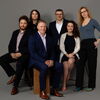
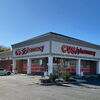
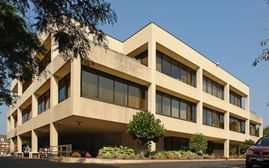
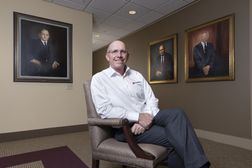
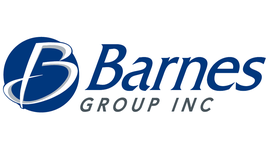
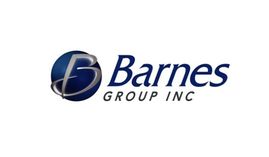
0 Comments